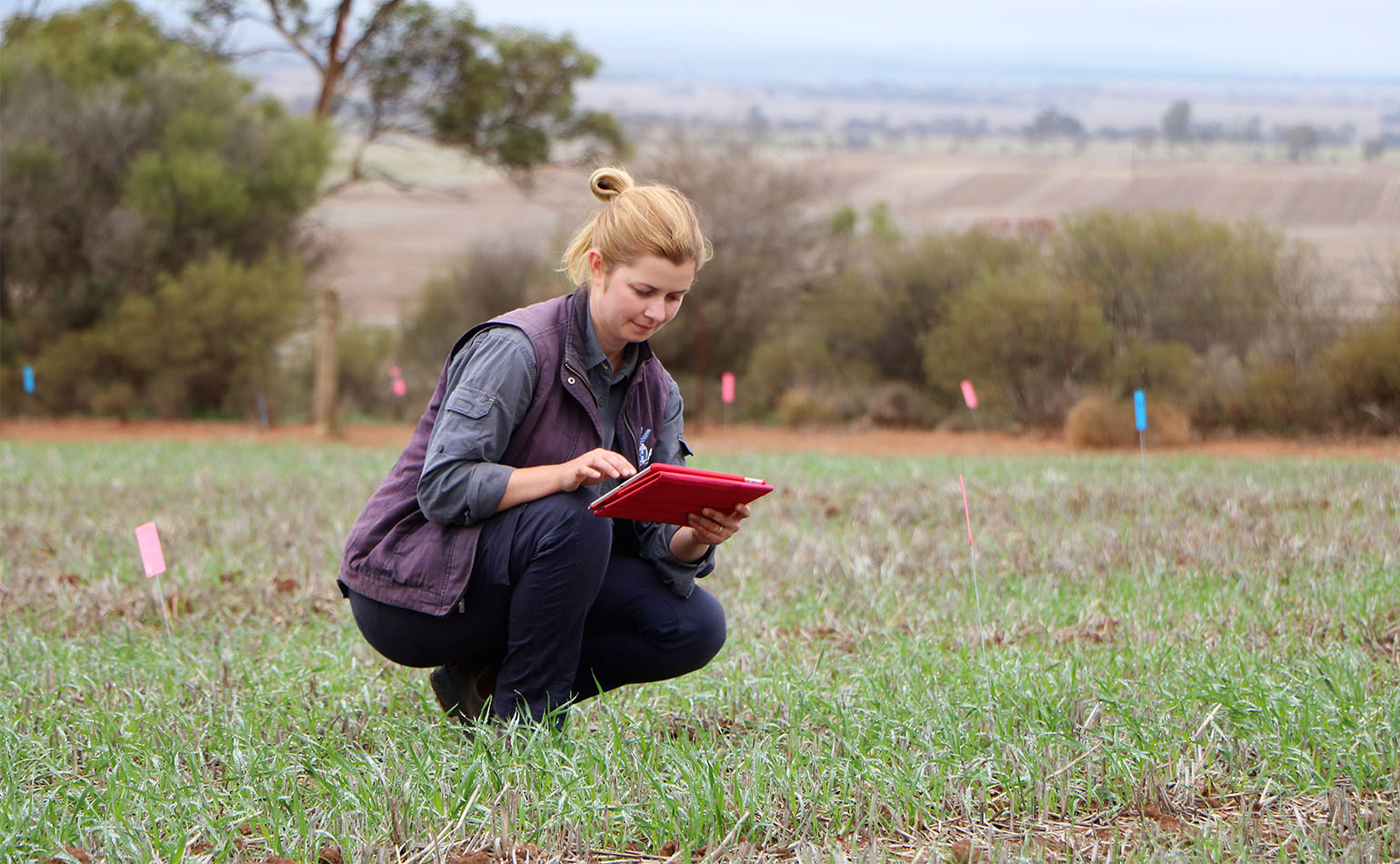The Soil CRC’s Communications Manager caught up for a five-minute chat with Sarah Noack, Research and Extension Manager at Hart Field Site Group.
Tell us about Hart Field Site Group
The Hart Field Site is between Blyth and Brinkworth in South Australia’s Mid-North, and it first started in 1982, with the very first Hart Field Day. It brought together local growers and agronomists from across the Mid-North region of South Australia.
At that time there weren’t many grower groups around and the field days provided a way to share knowledge about current research to farmers in the region. In 2000, the organising group became incorporated and purchased 40 hectares that is now known as the Hart Field Site and is where the Hart Field Day continues to be held every year. The Hart Field Site Group has always been and will continue to be, an organisation that brings researchers and farmers together.
Every year we see around 500 – 600 farmers attend the field day. Overall there are around 650 members of Hart Field Site Group. We conduct most of our trials at Hart Field Site but some are conducted outside the area, but still usually in the Mid-North region.
What area and type of farming do you cover?
Most of our members operate in the Mid-North of South Australia, but there are members who run properties outside of this area. The majority of the members are involved in mixed enterprises, with cropping and sheep. There are diverse crop rotations of cereals, oaten hay, field peas, lentils, faba beans, chickpeas and vetch.
What type of soil do you have?
There is a huge variation in our soil types across the region. Some are highly productive clay loam, with great water use efficiencies, others closer to the coast are sandier and are more challenging.
We have a range of issues such as surface and subsurface acidity and waterlogging. Like many regions, we find that even within farms, we have a diversity of soils and soil constraints.
Why did Hart Field become involved in the Soil CRC?
Whenever we talk to our members, soil health rates highly as a topic of interest. There are many things we don’t know about our soils, and our farmers are becoming more and more curious. Environmental sustainability is more of a focus, as is ensuring the economic sustainability of our enterprises. Finding efficiencies and savings with fertilisers and water means we need to address soil constraints.
In the early days of establishing the Hart Field Days, the Hummocks Soil Conservation Board was involved, so soil health has always been foundational.
We are also happy that along with PIRSA, MFMG, MSF and EPARF, we can represent South Australia in the Soil CRC.
What is exciting about working with the Soil CRC?
Giving farmers knowledge about their soil is so important. They know that they have problems with their soils, but often don’t know exactly what it is, or how to correct it.
We also really enjoy working with other agencies through the Soil CRC and making connections outside of our state and geographical location. We love that samples taken from our region are being examined and used for research. We believe it gives depth to the Soil CRC research to have the diversity of regions. Into the future we see that our members can then use the research and know that it is applicable to soils from their region.
Being part of the Soil CRC gives our members access to technologies and techniques and expertise that as a small farmer group, we just wouldn’t otherwise be able to access. It’s also been great for our staff development to be more involved in soil research.
What projects are Hart directly involved in?
Plant based solutions to improve soil performance (4.1.001) – led by Associate Professor Terry Rose, Southern Cross University
Addressing complex soil constraints (4.2.002) – led by Dr Jason Condon, Charles Sturt University

